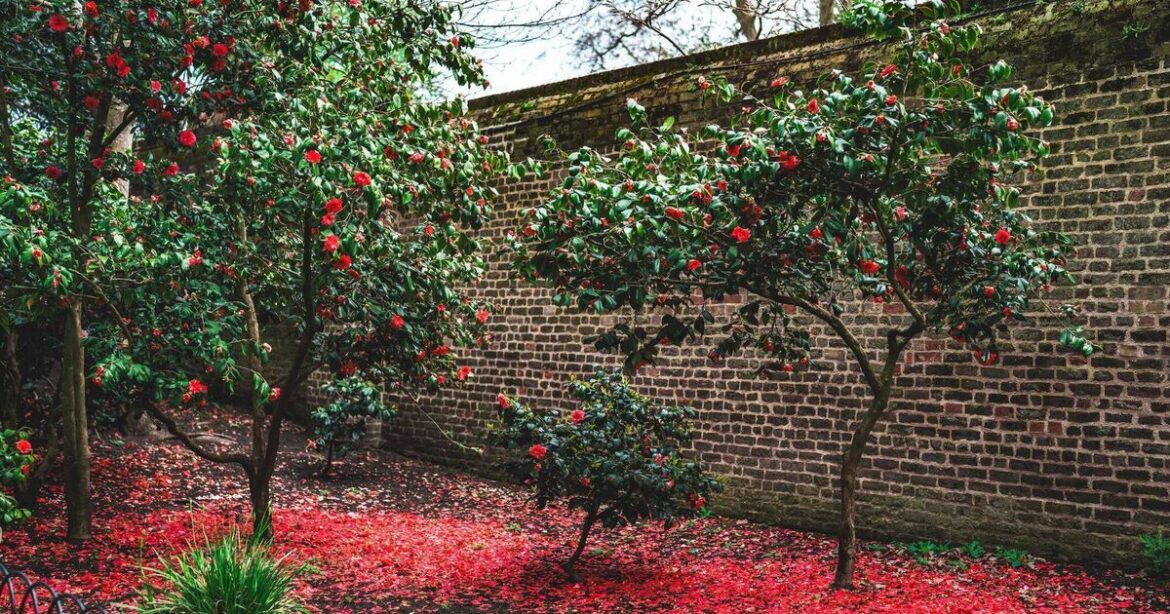Every so often, during autumn and winter, we may come across an errant bloom, such as a rhododendron or camellia, throwing out a flower or two when it really shouldn’t. A rogue bloom opening its petals in November, as if it had misread the calendar.
It’s a lovely surprise in one sense, a splash of colour when most other things are shutting down, but it’s also a bit of a sign that the weather’s been confusing.
We’ve had such mild spells in September and October in recent years that some plants are convinced spring has come early. A few days of warmth, plenty of moisture, and those tight buds are often tricked into opening far too soon.
Rhododendrons and early camellias are particularly prone to this. The buds they formed back in summer are ready and waiting for their cue, and when the temperature wobbles, they take their chance.
Whilst those mistaken blooms are a pretty accident, they shouldn’t distract us from the real stars of November, the plants that are meant to shine now, that actually thrive in this quiet, low-light beauty of the late year.
All the fluff and fuss of summer has gone now, and what’s left is structure, scent, and some real star performers. These are the true winter troupers that step up just when we need them most.
 Camellia.
Camellia.
Not every camellia that flowers now is confused, though; some are meant to. While most people think of camellias as spring bloomers, Camellia sasanqua types begin their show in late October and can keep going right through December.
The flowers aren’t quite as large or flamboyant as the spring forms, but they make up for that with their profusion and their delicate grace, soft whites, blush pinks, and deep carmines with golden centres.
If you’ve a sheltered, slightly acidic spot, perhaps near a path or a window where you’ll notice it every day, a sasanqua camellia will reward you for years.
One of my all-time favourite winter-flowering shrubs has to be Viburnum × bodnantense ‘Dawn’. If you’ve never met her properly, you’ve missed one of the garden’s great cold-weather pleasures.
 Viburnum x bodnantense ‘Dawn’ thrives in low temperatures, its sweetly scented blooms brightening up the winter garden, along with providing valuable food to any bees and other pollinating insects.
Viburnum x bodnantense ‘Dawn’ thrives in low temperatures, its sweetly scented blooms brightening up the winter garden, along with providing valuable food to any bees and other pollinating insects.
It’s a deciduous shrub, nothing too remarkable through summer, but once the leaves fall, the magic begins. Pink flower clusters appear on bare branches from late autumn right through to early spring, and the scent is just so sweet, spicy, and rich, carrying on the cold air on a still day that even I, with my dodgy sinuses, can enjoy it.
Plant it somewhere you pass often, near a path, by a gate, or beside the back door, so you can enjoy that perfume even on the days when you’re only rushing from the car to the house.
 Viburnum Dawn budding in New York.
Viburnum Dawn budding in New York.
Mahonia × media Charity, or its cousin Winter Sun, if you prefer something a little more compact, are proper architectural evergreens, standing tall and upright with spiky, holly-like leaves that catch droplets of rain and glisten in the weak sunlight. The yellow flowers appear in long, upright clusters from late autumn into midwinter, and the scent is beautifully sweet, a bit like lily of the valley if you catch it on a still day.
Another important reason to love mahonias is that they’re lifelines for pollinators. On those mild November or December days when a few brave bees are still about, you’ll find them buzzing around the flowers, grateful for one last feast before the cold truly bites. It’s a plant that brings life as well as beauty into the garden at a time when both are in short supply.
Perhaps one of the best-known winter-interest plants is Skimmia japonica Rubella, even though it doesn’t actually flower until early spring. This is a shrub that doesn’t need to rely on full flowers to look good.
Right now, the deep red flower buds are clustered tightly, like little jewels waiting for spring. They’ll stay that way all winter, offering colour and texture when everything else looks bare. When the days lengthen and the air warms, they’ll open into creamy-white blossoms, but for now, those buds are a wonderful contrast against the glossy evergreen leaves.
It’s a plant that asks for little and gives a lot, perfect for pots or shaded beds, happy in partial shade where other shrubs might sulk. Because it’s compact and neat, reaching an eventual height of about one metre by one metre, it fits beautifully into smaller gardens or courtyards.
If you’re planning your garden for the year ahead, this is the time to think about what’s missing right now. Step outside, notice what’s still giving you pleasure, maybe the bark of a dogwood glowing red, or the seed heads of ornamental grasses catching frost, and make a note of the gaps.
Then imagine how a viburnum or a mahonia might fill them next year.



Comments are closed.